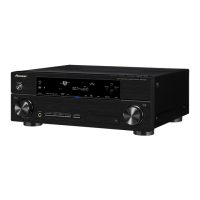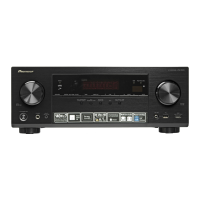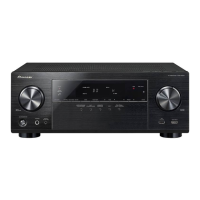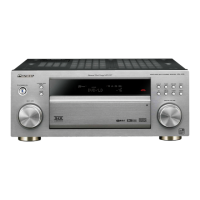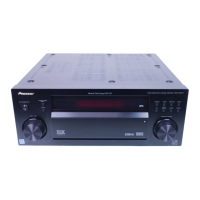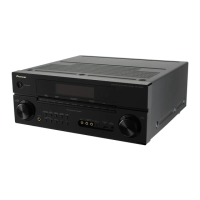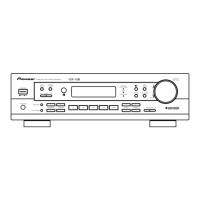The system and the other setup11
102
En
• SW – LFE signals and bass frequencies of
channels set to SMALL are output from the
subwoofer when YES is selected. Choose
the PLUS setting if you want the subwoofer
to output bass sound continuously or you
want deeper bass (the bass frequencies
that would normally come out the front and
center speakers are also routed to the
subwoofer).
1
If you did not connect a
subwoofer choose NO (the bass
frequencies are output from other
speakers).
3 Select ‘
X. OVER
’ and set the crossover
frequency.
2
Frequencies below this point will be sent to the
subwoofer (or LARGE speakers).
4 When you’re finished, press
RETURN
.
You will return to the Manual SP Setup menu.
Channel Level
Using the channel level settings, you can
adjust the overall balance of your speaker
system, an important factor when setting up a
home theater system.
Move the test tone manually from speaker to
speaker and adjust individual channel levels.
1Select ‘
Channel Level
’ from the
Manual
SP Setup
menu.
The test tones will start.
2 Adjust the level of each channel using
/
.
Use / to switch speakers.
Adjust the level of each speaker as the test tone
is emitted.
3
3 When you’re finished, press
RETURN
.
You will return to the Manual SP Setup menu.
Tip
• You can change the channel levels by
press , then press CH LEVEL,
and then using / on the remote
control.
4
Speaker Distance
For good sound depth and separation from
your system, you need to specify the distance
of your speakers from the listening position.
The receiver can then add the proper delay
needed for effective surround sound.
1 If you have a subwoofer and like lots of bass, it may seem logical to select LARGE for your front speakers and PLUS
for the subwoofer. This may not, however, yield the best bass results. Depending on the speaker placement of your
room you may actually experience a decrease in the amount of bass due low frequency cancellations. In this case, try
changing the position or direction of speakers. If you can’t get good results, listen to the bass response with it set to
PLUS and YES or the front speakers set to LARGE and SMALL alternatively and let your ears judge which sounds best.
If you’re having problems, the easiest option is to route all the bass sounds to the subwoofer by selecting SMALL for
the front speakers.
2 • This setting decides the cutoff between bass sounds playing back from the speakers selected as LARGE, or the
subwoofer, and bass sounds playing back from those selected as SMALL. It also decides where the cutoff will be for
bass sounds in the LFE channel.
• With Full Auto MCACC Setup or Auto MCACC Setup (ALL or Speaker Setting), the setting here will not apply and
the crossover frequency will be automatically set. Crossover frequency is a frequency aimed at achieving the optimal
sound field taking into account the bass capacity of all connected speakers and human aural characteristics.
• If you’re using a THX speakers, confirm that the crossover frequency is set to 80Hz.
3 • If you are using a Sound Pressure Level (SPL) meter, take the readings from your main listening position and adjust
the level of each speaker to 75 dB SPL (C-weighting/slow reading).
• The subwoofer test tone is output at low volumes. You may need to adjust the level after testing with an actual
soundtrack.
4 The channel level cannot be adjusted using this procedure while making settings on HOME MENU.
VSX-1020_UC.book 102 ページ 2010年1月7日 木曜日 午後6時0分
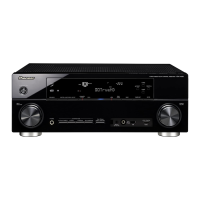
